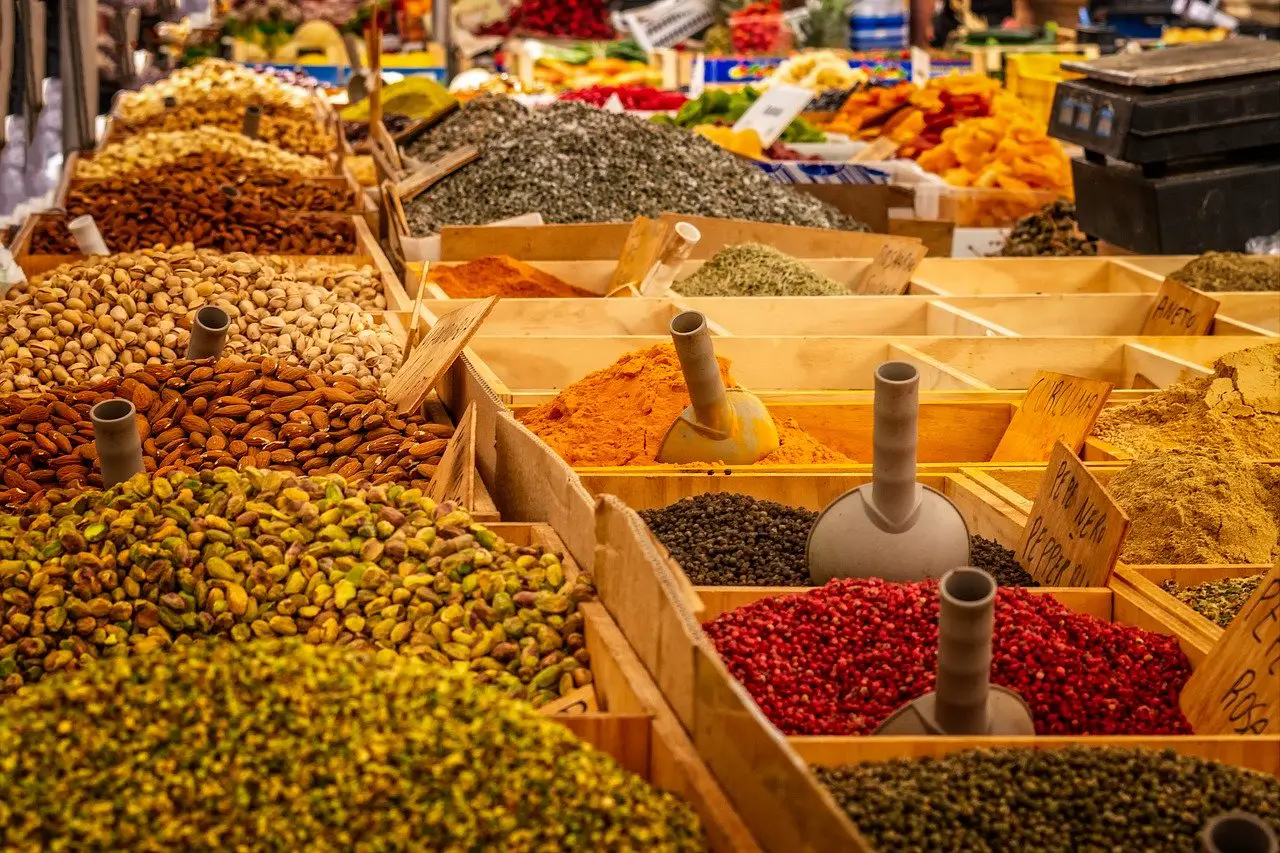With taste, we can distinguish sweet, sour, salty, bitter and umami. Other things that affect the taste are texture, texture, and temperature. It can be anything from juicy and dry to hot and cold. One tip is to mix both textures and flavors. For example, together with a mild soup, it is good to break off with a crispy topping.
SEASONING
When it comes to seasoning, it is often fresh and dried spices that many people think of when seasoning food. A simple basic rule for spices is that dried spices should go down early in cooking while fresh spices and herbs are added at the end. But also oils, vinegar and citrus fruits, for example, are good spices in food. Hot spices such as chili, pepper, horseradish, wasabi, and ginger give both a sting to the food and heat to the body and are spices that are good for digestion. Many spices have positive effects on our body’s health, such as ginger, turmeric, and cinnamon. Feel free to use these spices in your food to boost it with additional nutrients and antioxidants. One tip is to let one flavor dominate your seasoning and one to a few other spices in the background.
SWEET
Sweet flavors are the really delectable flavors that easily create a feeling of satisfaction. When life feels tough, it’s often the sweet flavors we treat ourselves to eating a little extra. Maybe it’s really when you need extra nutritious food to be able to get back on your feet. White sugar does not nourish the body and watch out for sweeteners and stevia which are sweeter than sugar. These sweet flavors can easily lead to the taste buds and the brain getting used to extremely sweet flavors and you can get a “sweet mouth” where the body craves even sweeter. There is ongoing research on how sweeteners also affect the stomach flora.
Then sweet fruits and berries are significantly better. For example, bananas are both saturating and energy-rich, a perfect fruit that can easily be transformed into good ice cream with any taste, without added sugar. It is easy to happen that some habits are created for food, and so for the sweet flavors. Friday night and Saturday morning.
By exchanging these habits for more nutritious moments, you are doing a great job for your body. Even sweet flavors can actually be nutritious. Replace all white refined sugar with naturally sweet fruits and berries in different forms. In order to achieve a sustainable and long-term change of habits, it is important that it also tastes good – it is not good, it is not sustainable. Try baking or making raw balls with Baobab powder, a powder made from the vitamin C-rich sweet-sour fruit from the Baobab tree.
Use mediocre needles for raw bottoms in cakes to give them sweetness and proper texture. Freeze the banana and mix to ice cream. Use other sugar products such as coconut sugar and sweet birch sugar. Use coconut syrup and agave syrup instead of regular syrup. Don’t forget that ordinary fruits like apple and orange or berries such as strawberries and raspberries are perfect as both flavoring and sweetening source in desserts, smoothies, and juices.
When cooking, carrots and beets are examples of good ingredients that add sweetness to the dish, good to use in a casserole as well as dipper.
SOUR
Acidity is the taste that registers the pH of a substance. A touch of acid in the food often makes the taste experience bigger and more satisfying. Acid is in extra good company with sweet and salty. Often a little acid is added to sweet products and it is the acid that stimulates saliva production and has the effect of “watering in the mouth”. The acid can also reduce any bad taste. For example, lemon can be added in black tea or vinegar to a ruccola salad. Sour flavors are found in, for example, citrus fruits, apple cider vinegar, and vinegar. Some spices such as basil, mint and cumin also have a certain amount of acid. Adding and souring vegetables yourself is easy and is a good accessory that is appreciated by both taste buds and stomach. Some ingredients, such as lemon, have an acidic taste, but in the body, it acts with a basic pH. This is because lemon contains basic minerals.
SALT
Salt brings out the other flavors in the food, but not salty too much. One tip is to salt afterward instead of in the meantime. For example, vegetables, rice and potatoes do not need to boil in salted water, instead, let the guests themselves salt to their own taste. Different salts also taste different and have different grain size and salt strength. Our Himalayan Crystal Salt is a pink rock salt extracted from the mountains of Pakistan where the salt has stored for around 250 million years.
Natural sea salts and rock salts are usually not enriched with iodine and then algae is a perfect iodine-rich supplement. Seasoning the food with sea algae is another way to salt the food as algae are naturally salty. But when it comes to algae you have to try them out as they have different tastes. Many are good while some are more difficult. Aramaic Algae is a good beginner’s algae with a mild and slightly light salty taste.
Try crumbling Aramaic Algae or the slightly tastier Noria Algae over a salad or casserole. Another alternative is Furikake, which is a ready mix of sesame seeds, crumbled Noria algae and shiso leaves. The topping gives texture, taste and is also very decorative. Tamari is gluten-free soy that adds a lovely salt to the food.
UMAMI
Umami is the taste that can give the food that extra spice and fullness that makes everything so inexplicably good. Umami is found in miso, ripe tomatoes, shiitake mushrooms and tamari.

